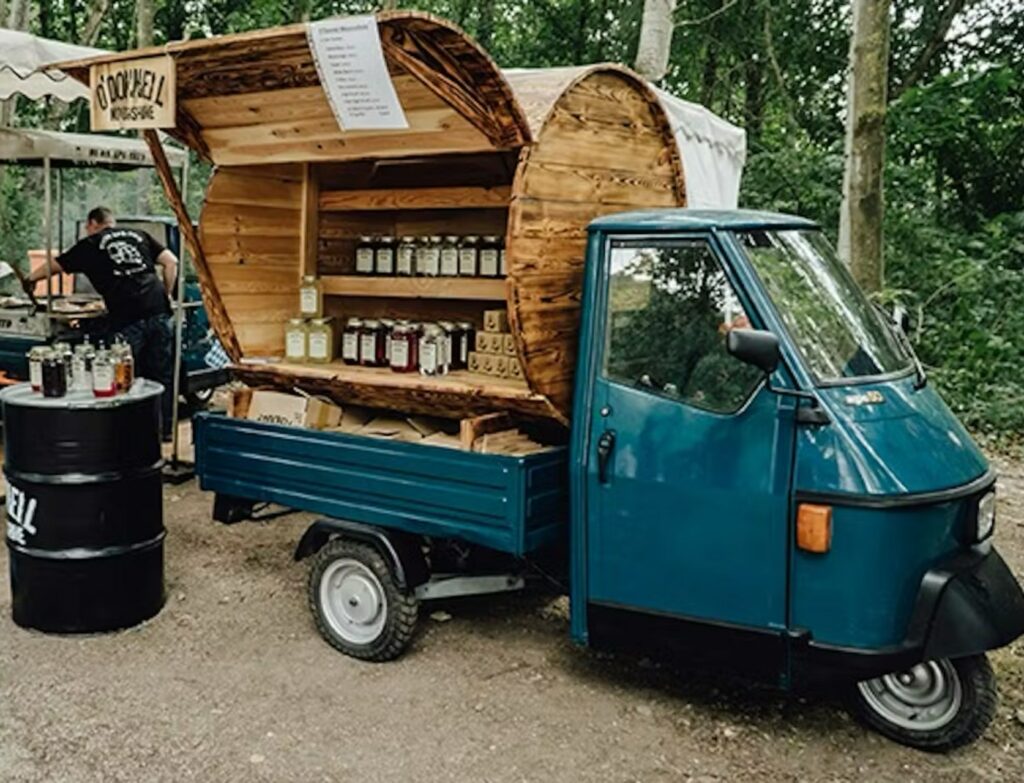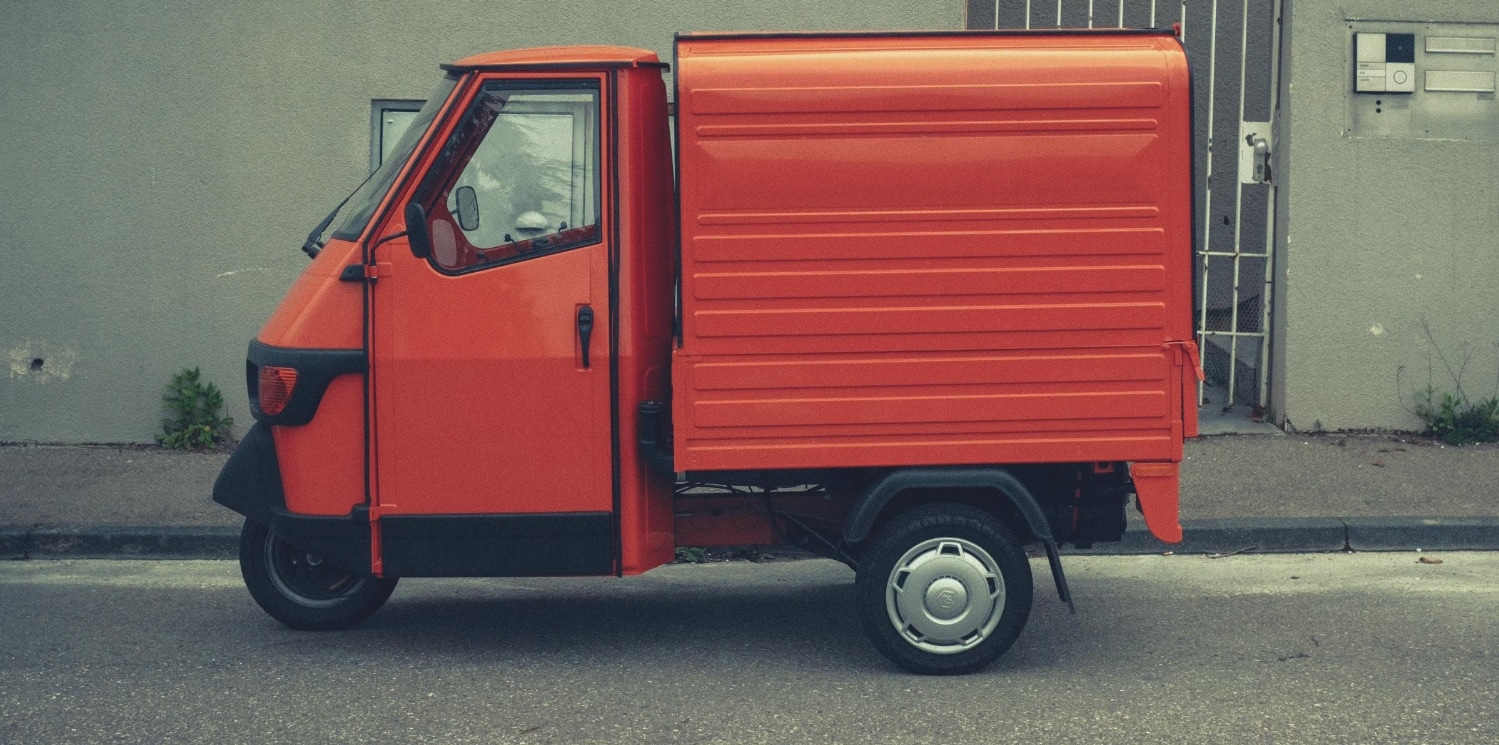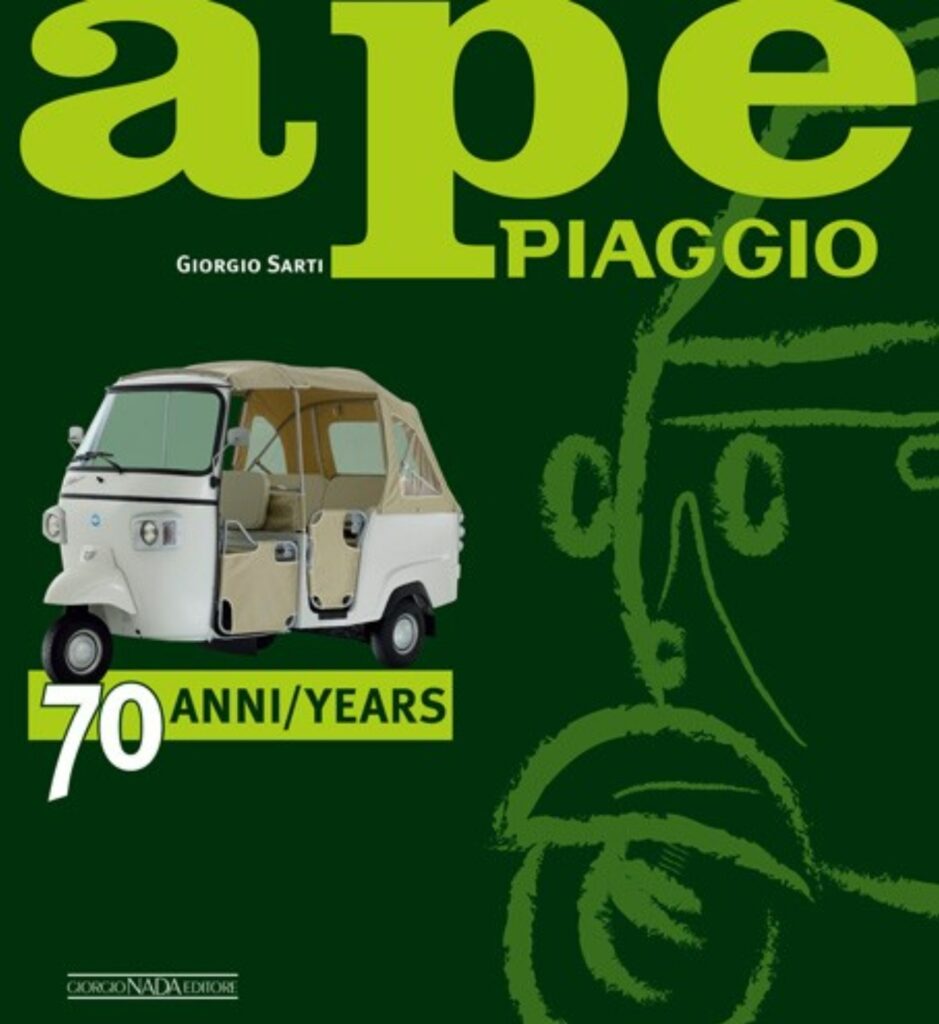Italy’s popular three-wheeled transportation vehicle, the Ape, is no longer produced in Europe after more than 76 years. Born out of post-war hardship, the Vespacar developed into a symbol of the Italian way of life and practical mobility. Its era came to an end in 2024.
Another icon from the Piaggio stable
Why another icon? Icons cannot be planned. After all, it is the person who makes something an icon. The Ape appeared on the Italian market barely two years after the first Vespa. The motives were the same as for the design of the Vespa scooter: In shaken post-war Italy, there were neither intact roads nor cheap means of transportation. They had to be inexpensive to buy and to maintain. They had to be stable and robust, easy to drive, easy to repair and affordable. We all know what became of these considerations.

Our Vespa was initially created to get people from A to B. Based on this, the Ape was designed on the drawing board in the production facilities in Pontedera. It is not particularly difficult to understand that the first thing that was created was a transport trolley, which was nothing more than a Vespa scooter with a loading area. To protect the driver and the load, a lot of sheet metal was built around it. Three wheels were used to improve stability. Comfort was largely dispensed with. No heating, no air conditioning, no adjustable driver’s seat, no radio, spartan interior, manageable power: a two-stroke engine with a displacement of 50 cm³, maximum top speed of 40 km/h.
What does Ape actually mean?
Ape is Italian and means bee, while Vespa means wasp. The Piaggio company has thus remained true to its line in the naming of its vehicles. Wasp and bee. Both are useful insects, as are the motorized vans. The Ape is the favorite means of transport, at least for Italians. Malicious tongues claim that only a few professional groups can do anything with the Ape mini-truck. These are Italian pizza makers, vegetable and beverage suppliers, wine growers, cemetery gardeners and drink-loving contemporaries. Pizza bakers and beverage suppliers because they have to navigate the narrowest lanes, winegrowers because the distances between the vines are very narrow and, last but not least, amateur drinkers because they no longer have a car driver’s license. For anyone who would like to find out more about the fascinating history of the Ape, the APE PIAGGIO 70 anni / 70 years handbook by Giorgio Sarti is a comprehensive source.
Iconic driving fun with the cargo moped
Are we really talking about fun here? Yes, we certainly are. On no other vehicle is the road as close as on the Ape. It’s almost a bit like driving a Trabi from the former GDR. Anyone who dares to drive on cobblestones is very brave. Every gear change is like a powerful kick in the tailbone. Despite the low speed of the cab scooter, it feels like you’re traveling at a really high speed. It feels a bit like a hell of a ride. Especially in city traffic, the Ape pilot needs a high degree of concentration and coordination skills.
Initially, the riders’ foreheads are beaded with sweat. They have to contend with all kinds of inconveniences: the gearbox is temperamental, the foot brake is lazy and very comfortable, it refuses to do its job. What’s more, drivers are shaken and rocked due to the lack of suspension. The driver’s cab bounces back and forth, up and down like a cue ball. However, you soon get used to it and the fun begins to shine through.
Instructions for shifting into reverse gear
Yes, the Ape has a reverse gear. It sticks out of the bottom of the body as a bare, black metal rod. The metal rod is gripped as tightly as possible with the right hand (the left hand is otherwise occupied with the clutch). The legs are then pushed firmly onto the floor of the cabin. The next step is to throw your upper body back while pulling the metal linkage at the same time. Then there is a nasty clunk – a greeting from the non-synchronized gearbox, so to speak – and reverse gear is engaged.
The Ape will disappear from the European market
That is actually a great pity. But the Ape can no longer meet the strict environmental regulations in Europe. This is particularly unfortunate for young Italians. They are already allowed to ride this 50 cm³ machine at the age of 14. Anyone can imagine how tempting that was for young people.
Tuning was the main topic with regard to the Ape
The lame, standard engine was often replaced by souped-up engines that were used in their entirety. These can be engines with 103 cm³ or 133 cm³, which are replaced in order to increase engine power. They are supported by the well-known Italian tuning companies Polini and Malossi. These companies offer complete conversion kits. The SIP Scootershop also offers replacement and tuning parts for the three-wheeled transport vehicle.
It is easy to understand that in rough mountainous regions, young people organize a kind of arms race. So an Ape pimped up with spoilers, sports exhaust and similar tuning parts certainly contributed to a good image within the youth groups. An acceptable ground clearance, together with quite short body overhangs, can enable the Ape to tackle steep, washed-out gravel roads in the Apennines almost effortlessly. There are roads to be found that cannot be conquered by any car.




